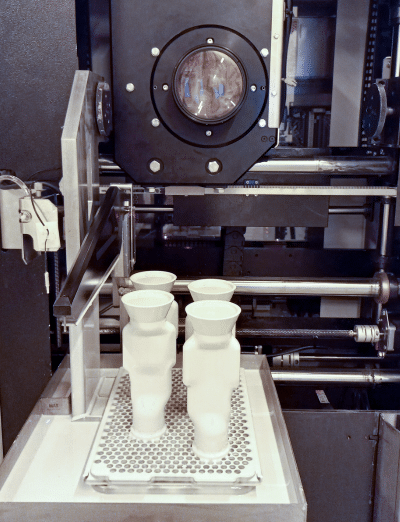Turbine blades—critical components in both aerospace and industrial engines—must withstand extreme thermal, mechanical, and structural demands. For decades, traditional casting processes, particularly investment casting, have dominated this field, relying on precision wax modeling and complex solidification techniques. Today, ceramic 3D printing is emerging as a disruptive technology, bringing unmatched agility, geometric freedom, and compatibility with advanced techniques like single-crystal casting.
A Legacy of Investment Casting
Historically, turbine blade manufacturing has relied on the investment casting process. This involves creating a wax model of the final component, including its internal cooling channels, through injection molding into metal dies. These wax parts are then assembled into trees or clusters, dipped into ceramic slurries, and coated with layers of refractory sand to build a durable ceramic shell.
Once the shell is complete, the wax is removed through an autoclave process, and the ceramic is fired to form a high-temperature-resistant mold. Ceramic cores—molded separately—are inserted into the wax model beforehand to create the internal voids necessary for component cooling.
While extremely precise, this process is lengthy, rigid in design adaptability, and costly for modifications or low-volume production. It also imposes geometric limitations, particularly for intricate internal channels, potentially restricting performance optimization.
Ceramic 3D Printing: A Structural Turning Point
Ceramic 3D printing enables the direct production of molds and cores from digital files, bypassing the need for wax injection and metal tooling altogether. This marks an immediate leap in manufacturing flexibility.
Technologies such as DLP-based photopolymerization of ceramic-filled resins (e.g., MOVINGLight®) now allow for extremely complex geometries with resolution as fine as 31 microns. These parts maintain sufficient structural integrity to withstand the intense thermal and mechanical stress of molten metal casting.
Even more, this process allows formerly separate manufacturing steps to be integrated into a single build: intricate curved cooling channels, thermal redistribution devices, or even embedded grain selectors can all be printed directly into the mold geometry.


